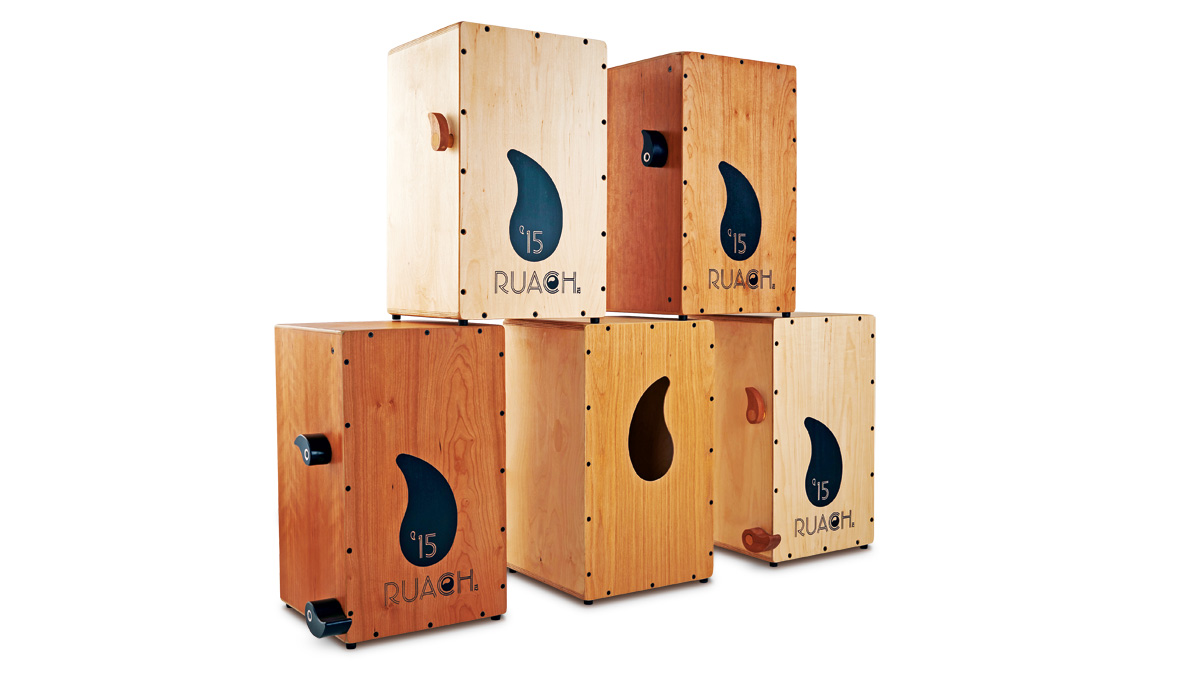MusicRadar Verdict
The Live A is certainly the pick of the Ruach bunch, but it is eye-wateringly expensive.
Pros
- +
Superbly well-made. Great tone.
Cons
- -
Very expensive.
MusicRadar's got your back
Ruach Cajons has come a hell of a long way in a very short space of time.
Founded in Northern Ireland by a then-16-year-old Phil Henderson just four years ago, the company started out as purely a way for the teenager to get his hands on a cajon without breaking the bank. He couldn't afford one, so he knocked up his own.
Word of young Phil's handiwork quickly spread and today Ruach makes five different cajons. Today, we have Ruach's Live series to review.
Build
Sized 50cm x 30cm x 30cm, the Live A is made from cherry and features Ruach's internal bass drum pedal. It also features a five-way snare mechanism and detachable handles. The Live B is another cherry cajon, similar to the A but without the bass pedal. All cajons feature a sound hole in the shape of Ruach's logo.
Hands On
There's only one place to start, we're right in there with the flagship model, the Live A. Priced at £445 this is one costly bit of kit, but is it worth the dough? The cajon itself is without doubt a quality instrument, the cherry wood surface allows for some rich tones no matter where you play along the tapa.
The five-way snare mechanism is a nice idea, but there's not a whole lot of difference to our ears between several of the settings. It's impossible to argue against the fact, though, that at top tension this is one sweet-sounding cajon.
At first the pedal feels a little fiddly, it's a pretty small surface area that you need to get your foot onto, and Ruach has possibly sacrificed ergonomics for style by making the pedal in the shape of the company's logo.
Playing heel up, as recommended by Ruach, is tricky and wears on the muscles pretty quickly. After a little experimenting, however, we hit paydirt. For our money your best bet is to whip your shoes off and play heel up. All of a sudden knocking out some multi-faceted grooves is an absolute doddle.
Sonically, the internal beater gives a decent response, but can occasionally be a little underpowered unless you give it some welly each and every time.
The Live B is the same instrument as the A, but without the bass pedal. We found very little difference in sound between the A and B but for us, it is worth shelling out the extra £56 for the A's pedal.
Rich is a teacher, one time Rhythm staff writer and experienced freelance journalist who has interviewed countless revered musicians, engineers, producers and stars for the our world-leading music making portfolio, including such titles as Rhythm, Total Guitar, Guitarist, Guitar World, and MusicRadar. His victims include such luminaries as Ice T, Mark Guilani and Jamie Oliver (the drumming one).
“I have an original 909 – every time I try to use it I feel like I’m ruining it”: House hero Riva Starr on his studio essentials and his love of analogue synths
“A synthesizer that is both easy to use and fun to play whilst maintaining a decent degree of programming depth and flexibility”: PWM Mantis review
“I feel like that song had everything we needed to come back with”: Bring Me The Horizon’s Lee Malia on Shadow Moses, its riff and the secrets behind its tone, and why it was the right anthem at the right time











